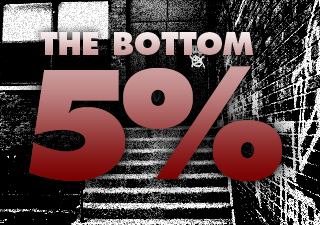Commentary

Pennsylvania’s School Choice Movement Must Address the ‘Bottom 5%’
Guest commentary by Senator Jeffrey Piccola
Pennsylvania has a simple choice to make. We can embrace change and welcome educational reform or we can choose to satisfy ourselves with the tired old policies of the past that, by any reasonable standard of measure, have failed our children.
In the last decade, we have made strides in developing tools that allow us to objectively measure our students’ successes and failures in the classroom. Because of these accountability tools, we have found that there are many schools that persistently fail to provide our children with a proper education. These schools fall in what we call the Bottom 5%.
Senate Bill 1 which I have sponsored along with Senator Anthony Williams of Philadelphia is aimed at these 143 schools that are the poorest performing in the state. Our legislation focuses on these “worst of the worst” schools and opens up opportunities for students who don’t have options. If there is ever a group in need of opportunity scholarships or “vouchers,” it is these kids who continue, through no fault of their own, to be trapped by their zip code and consigned to failure because they attend one of the Bottom 5% schools.
Critics of our approach argue that we will be harming those schools by taking away much needed resources. But I ask you – how much is enough? We have poured millions of extra dollars into these failing schools over several decades and nothing has worked.
And speaking of harm – who is harming whom? Many of these Bottom 5% schools are violent places, as evidenced by the crime statistics reported annually by these schools to the Pennsylvania Department of Education. How can a child learn or a teacher instruct under these conditions? The simple answer is that they can’t. According to data compiled by the Commonwealth Foundation, only 32% of students in the Bottom 5% schools are proficient in reading and 38% percent proficient in math on a recent Pennsylvania System of School Assessment (PSSA) test. This means that, on average, nearly two-thirds of these school students are not being prepared properly to advance into the real world.
We have made progress in drawing attention to the failures of these persistently failing schools. Even the federal government (U.S. Department of Education) has put its focus on the Bottom 5% to define the “persistently lowest achieving schools” for purposes of awarding school improvement grants. Their efforts focus on turning around struggling schools by targeting specific interventions to the Bottom 5%.
But there are some who believe this pool of schools is too large for a lifeline from the Commonwealth. Some believe we should narrow the scope of Senate Bill 1 even further. To this, Senator Williams and I emphatically say, “NO.” These Bottom 5% schools have historically failed our children, and it is time for a new solution. Thankfully, Governor Tom Corbett agrees with us and is not willing to give up on these children.
We are hopeful the House of Representatives will swiftly take up Senate Bill 1 to give these kids a chance and enact one of the most sweeping educational reform proposals to move through the General Assembly in the past 50 years. We owe this reform to the kids who are trapped in those schools now, and must make the promise to the next generation that we will not fail them.
# # #
Sen. Jeffrey Piccola (R-15, Dauphin/York Counties), is a prime sponsor of Senate Bill 1 and Chairman of the Senate Education Committee.